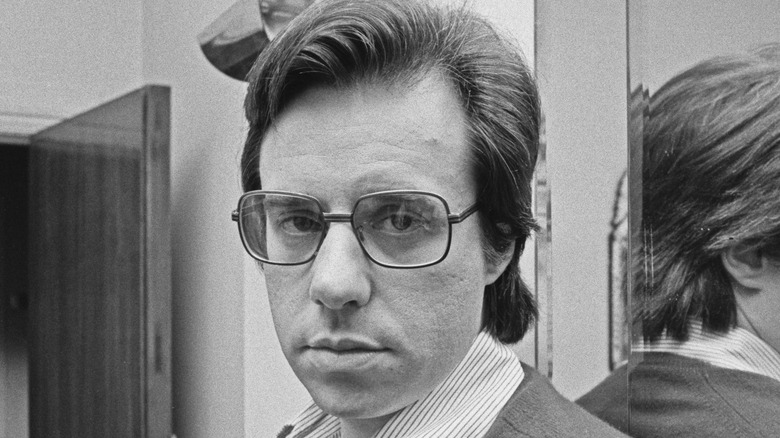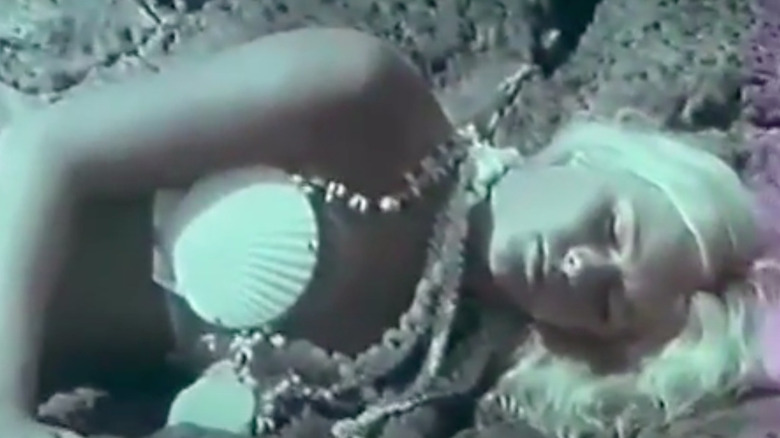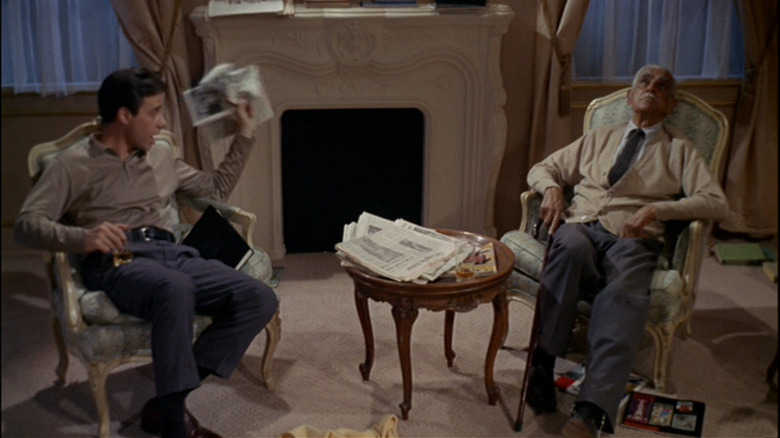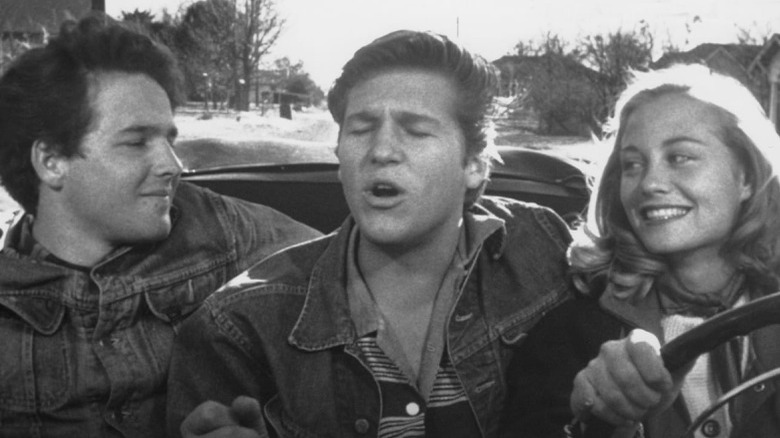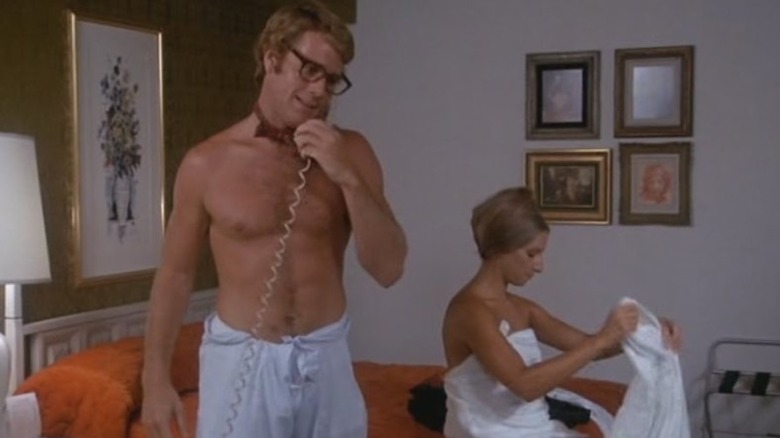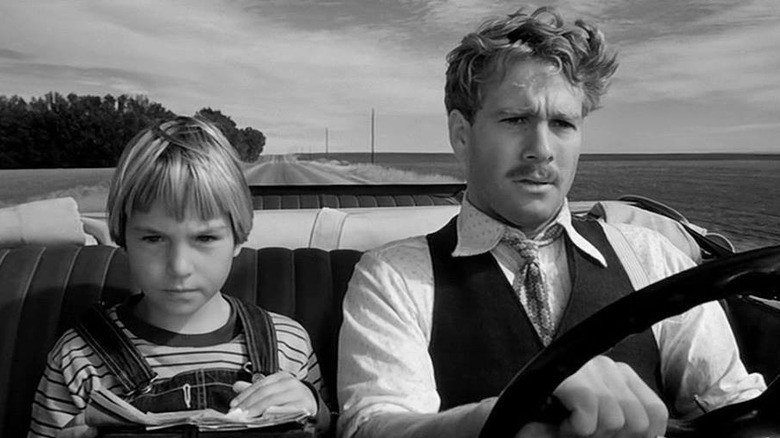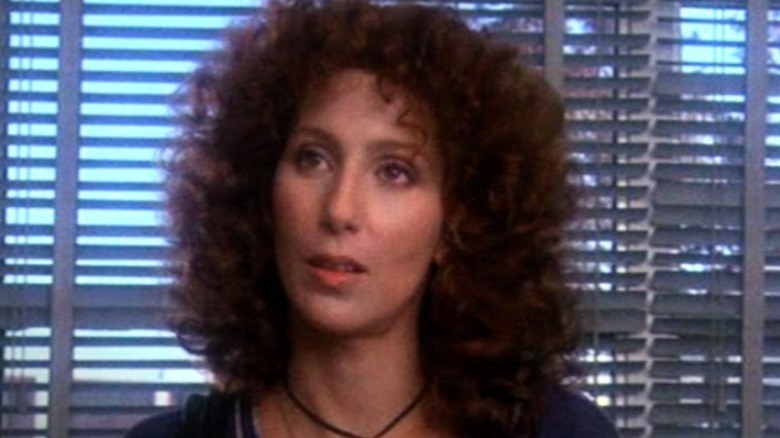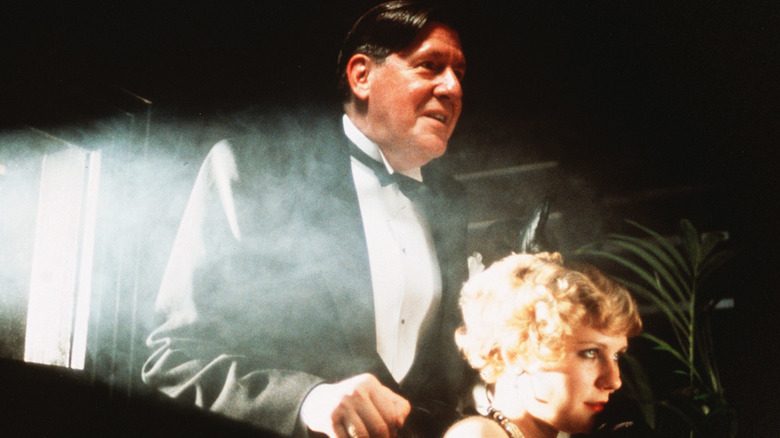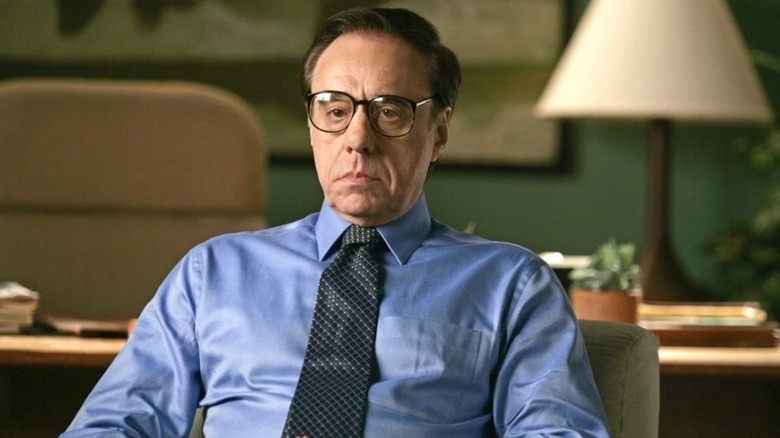The Untold Truth Of Peter Bogdanovich
Hollywood was deeply saddened to learn of the death of famed filmmaker Peter Bogdanovich. Along with Martin Scorsese and Francis Ford Coppola, he was one of the defining voices of the 1970s who directed several masterpieces, including "The Last Picture Show" and "Paper Moon." Beyond that, he was a talented actor, too, with numerous credits including a notable role in "The Sopranos."
According to Billy Wilder, nothing united Hollywood more than when Bogdanovich made a film that failed financially. To pay the bills, Bogdanovich would wind up making several television films, including a sequel to Sidney Poitier's "To Sir, With Love." However, it's clear from the reaction to his death that his successful work is what has ultimately defined him.
So let's take a look back at the life of Peter Bogdanovich, from his beginnings to his greatest works. We'll miss him, but we still have plenty of his films to revisit now. Here is the untold truth of Peter Bogdanovich.
He used a pseudonym for his first film
Like many in the industry, Peter Bogdanovich got his start working for producer Roger Corman, including as an uncredited writer and second unit director on the biker movie "The Wild Angels." Technically, Bogdanovich's directorial debut was on a Corman film called "Voyage to the Planet of Prehistoric Women." Bogdanovich didn't do that much on it, though, and chose to be credited as "Derek Thomas" instead.
He explained the situation to The AV Club, "Yes, it was a Russian science-fiction film that Roger had called 'Storm Clouds Of Venus' that he had dubbed into English. And he came to me and said, 'Would you shoot some footage with some women' ... So I figured out a way to work some women in it and shot for five days, and we cut it in ... It was just a little cheap thing we did, and people think I directed it when I really only directed 10 minutes of it." It's probably not fair to call it his debut anymore than it's fair to call "Piranha 2: The Spawning" the debut of James Cameron, but the experience working with Corman would set up Bogdanovich to make his first real film.
He regretted making Targets after the shooting in Aurora, Colorado
"Targets," Bogdanovich's actual debut film for producer Roger Corman, shows how horror films of old pale in comparison to the horror of the real world. In it, Boris Karloff (in one of his final roles) plays an aging horror actor about to retire who agrees to appear at a screening of his latest film at a drive-in theater. While there, a sniper starts shooting innocent viewers, and the actor confronts a very different kind of monster than the one he's used to.
While a powerful film, it gained new relevance after the shooting that happened during a screening of "The Dark Knight Rises." As Bogdanovich told The Hollywood Reporter, "People go to a movie to have a good time, and they get killed. It's a horrible, horrible event. It makes me sick that I made a movie about it." Bogdanovich based the film on a real-life event, but by 2012 films had changed a lot, and he felt that the kind of violence depicted in his own movie and "The Dark Knight Rises" wasn't good for society.
His sequel to The Last Picture Show wasn't as successful
Bogdanovich's second film, "The Last Picture Show," was hailed upon its release by film critics. Bogdanovich, while remembering the film with Entertainment Weekly, recalled that Newsweek declared it "the most impressive work by a young American director since "Citizen Kane.'" The black and white drama found commercial success, as well, and wound up being the 9th highest-grossing film of 1971.
Bogdanovich wound up making a sequel called "Texasville" nearly 20 years later, but it's much less known today. Shot in color in an attempt to make it more mainstream, it only made $2 million at the box office. Bogdanovich would eventually put out a director's cut, explaining his disappointment with the theatrical cut to Venice Magazine, "They cut 25 minutes out of 'Texasville', which was supposed to be a bittersweet picture like 'Picture Show' was. They wound up cutting most of the bitter and keeping in the sweet, which completely threw it off balance." Still, though, the original cut has its champions including film critic Jonathan Rosenbaum who listed it as one of his 1,000 favorite films.
What's Up, Doc? was a surprising success
"They don't make them like they used to" doesn't apply to a '70s film like "What's Up, Doc?" While technically accurate that the movie was made in the '70s, and few films resemble it today, it was made as a tribute to Howard Hawks' 1938 film "Bringing Up Baby." However, it is fair to say that people don't watch them like they used to because the $57 million that "What's Up, Doc?" made in 1972 would be over $375 million today, which is a level of success that comedic films rarely come close to today.
The screwball comedy starring Ryan O'Neal and Barbra Streisand contains several memorable over-the-top laughs and is also a pretty good romance. AFI not only listed it as one of the 100 greatest comedies of all time in 2000 but as one of the greatest love stories of all time in 2002. Also on that list of greatest romances is "Love Story," where Ali MacGraw tells Ryan O'Neal that "Love means never having to say you're sorry." When Streisand repeats that line in "What's Up, Doc?" O'Neal says, "That's the dumbest thing I've ever heard."
Paper Moon was almost directed by John Huston
"Paper Moon," the story of a conman (Ryan O'Neal) and a little girl who may or may not be his daughter (Tatum O'Neal), was one of Bogdanovich's finest films, but he almost didn't get to make it. In fact, the film came very close to being made by his future "The Other Side of the Wind" co-star, John Huston.
Bogdanovich confirmed this to Venice Magazine, saying, "Paramount owned the property originally and had John Huston lined up to direct with Paul Newman and his daughter to star. Then they wanted me to direct, but I didn't particularly want to do it with Paul. I wanted to do it with Ryan, so that's what happened."
While Bogdanovich didn't go with Paul Newman, he kept the idea of casting a star along with his real-life daughter. This makes explicit the subtext that the little girl probably is the conman's daughter despite his denials. Tatum O'Neal gave one of the finest child performances ever put on film, and she justifiably became the youngest person ever to win an Oscar.
His feud with Cher ended amicably
While "Mask" was seen as a comeback for Bogdanovich after a string of flops, his fights with the studio and Cher almost overshadowed it. Bogdanovich and Cher had separate press conferences at the 1985 Cannes Film Festival, and Cher said at hers that "Peter would serve his own interest before serving the film's interest."
Of course, Bogdanovich has his own perspective on the matter. In an interview with Vulture, Bogdanovich said, "She can't act. She won best actress at Cannes because I shot her very well ... I shot a lot of close-ups of her because she's very good in close-ups ... I shot more close-ups of her than I think in any picture I ever made."
Despite the harsh words, Cher had nice things to say after Bogdanovich's death, tweeting, "Just heard Peter has died. I'm proud of the film ('Mask') we made together and in the end I'm sure he must have been as well. He made some very memorable films and discovered amazingly talented artists."
He was much harder on William Randolph Hearst than Orson Welles was
Orson Welles' "Citizen Kane" is often acknowledged as a loose retelling of the life of newspaper publisher and failed gubernatorial candidate William Randolph Hearst. As dramatized in David Fincher's "Mank," screenwriter Herman Mankiewicz was friends with Hearst and Hearst's mistress, Marion Davies. However, as negative as many perceive those films to be towards Hearst, neither ever accuses him of murdering anyone. However, that's exactly what Bogdanovich did with "The Cat's Meow."
Bogdanovich explained the origin of the movie to The AV Club, "Well, 33 years ago, in a conversation with Orson Welles about 'Citizen Kane,' he told me the basic plot of what became 'The Cat's Meow.' He told me what happened on the yacht ... Orson told it to me as an example of how Kane wasn't supposed to be Hearst. If Kane was supposed to be Hearst, Orson would have included the incident ... Mankiewicz put it in, but Orson had it taken out because he didn't feel that Charles Foster Kane would behave that way."
Despite being viewed by some as revenge for his old friend Welles, Bogdanovich sees it as ultimately sympathetic, giving credit to Edward Herrmann's performance.
Lorraine Bracco challenged him to be a better actor on The Sopranos
Peter Bogdanovich didn't direct as many films as he used to later in life, but he found plenty of success as an actor. He's often played himself or someone loosely based on himself, but his best-known role was as Dr. Elliot on "The Sopranos," which he also directed an episode of.
Dr. Elliot was Dr. Melfi's therapist, which meant that Lorraine Bracco was Bogdanovich's main scene partner on the show. On the "Talking Sopranos" podcast (hosted by stars Michael Imperioli and Steve Schirripa), Bogdanovich revealed how he would have to adjust to keep up with Bracco's talent, "She was wonderful. When you think about her, she never did two takes the same way ... So I had to be on my toes. I couldn't play it the same way if she wasn't going the same way. I had to change my attitude." Bogdanovich goes on to say that he had to suppress any ideas he might have had if he was directing, and it's that lack of control that led to him giving a better performance.
